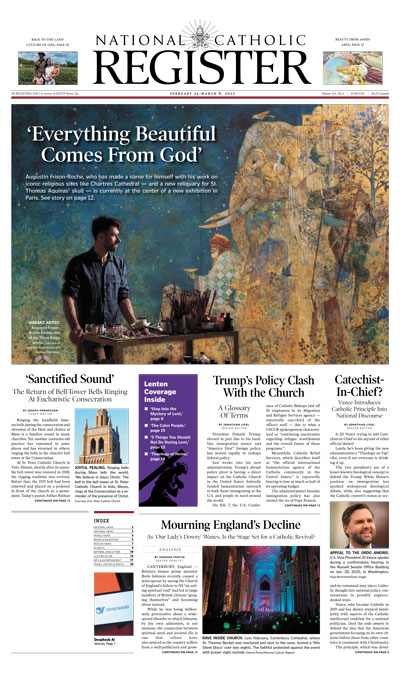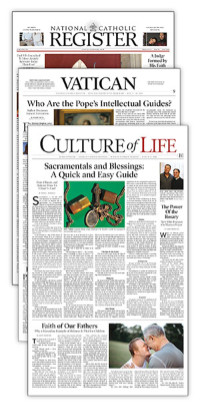Conclave 2025: Why the ‘Liberal vs. Conservative’ Lens Blurs the Church’s Reality
COMMENTARY: Ecclesiology, not just personality, is at stake in this conclave. A new pope must resist false reform rooted in moral compromise.

As with every conclave to elect a new pope, this one is surrounded by all kinds of speculation.
Will the conclave that begins May 7 elect a new pope in the mold of Pope Francis, or someone more traditional in doctrine and liturgy? Or perhaps he will be what the badly uninformed mainstream media might label a “moderate” — neither conservative nor liberal, but a term overly simplified nevertheless — who seeks to reconcile the various factions within the Catholic Church.
The problem with all of these analyses is that they assume the Church is a largely “political” entity that mirrors the demographic dynamics of secular society in the West. What this means is that a term like “reform” gets tossed around in superficial ways, with secular media often treating “reform” as synonymous with “liberalization.”
We see this frequently in the standard description of Pope St. John XXIII, who is often called a “reforming” pope since, as the narrative goes, he sought to bring the Church into harmony with modern secular liberalism. This is, of course, a false narrative, since the aggiornamento that he sought was not a project of liberalization but was instead a push for the Church to engage the modern world in new and creative ways, with an eye toward a more effective evangelization of that world.
This was made clear by Pope John in his opening speech to the Council Fathers, in which he envisioned the coming Second Vatican Council as an attempt to put the Church’s doctrines into a newer and more evangelical language, all the while remaining faithful to the truths therein.
Seen in this light, true “reform” is not liberalization but rather a recentering of the Church in her deepest and fullest traditions, and with a renewed focus on Christ the Lord as the linchpin that holds it all together. This is completely consonant with the history of all of the various reforms undertaken by the Church throughout time.
When the Church became corrupted by the allure of worldly power and wealth, various reforming popes and councils sought to right the ship by reemphasizing Christ and renewing the call for the entire Church to live out more fully the evangelical counsels of poverty, chastity and obedience.
We also saw this in the various reform movements undertaken by religious orders whose internal life had become lax and worldly. Various “discalced” movements arose within these orders, seeking to reinvigorate religious life through a more rigorous living out of the evangelical counsels — which is to say, a more Christocentric form of life centered in prayer, truth, love, and the corporal and spiritual works of mercy.
But the modern media narrative cares little for such distinctions — or for the history of what true reform actually is — largely owing to their ignorance of all things Catholic. Today, we see the same simplistic analysis being applied to the “politics” of the coming conclave, as well as to the pontificate of Pope Francis.
Francis is portrayed as a “reforming” pope because he seemingly desired a Church that was more liberal, especially in matters of sexuality — in contrast to the previous two popes, who are wrongly described as “conservative” and thus presumed to have resisted reform.
Likewise, Vatican II is often described as a council that sought reform in this same liberal direction — a vision of a more “inclusive” Church said to have been short-circuited for a time by John Paul and Benedict, who allegedly sought to “roll back” the reforms made in the ’60s and ’70s.
No attempt is made at a true understanding of the conciliar texts, and the Christocentric conciliar project as the overarching narrative of reform as liberalization became the standard boilerplate for most media depictions of the Council. This fact was noted by Pope Benedict, who lamented that this “council of the media” had replaced the true Council.
The essential distortion of this false narrative is especially apparent in the description of the papacy of Francis as one characterized by a desire for a more inclusive Church. It is a distortion because the Church is now, as it has always been, inclusive of everyone.
No person who truly seeks Christ in his Church is turned away as if the Church were a nightclub with bouncers at the door, allowing only the morally perfect. All sinners are welcome — so long as they seek conversion and repentance, no matter how many times they might fail. That is why the Church has confessionals. The kind of “inclusion” the Church preaches is the inclusion that comes through a liberating conversion of soul.
Sadly, even many influential prelates seem to buy into the false narrative where reform is caricatured as liberalization. Once again, matters of human sexuality loom large in their calculations. A truly wicked notion has crept in that says that the Church cannot be inclusive, and thus the Church remains “unreformed,” until the distinction between sin and the sinner is set aside. This traditional distinction is ridiculed as “exclusive,” “harsh” and “judgmental.” This is especially the case, they say, with “LGBTQ” people, whose very “identity” is at stake; and they say that the Church’s traditional moral teaching — which calls for sexual continence — runs contrary to “how they were made by God.”
Therefore, in this narrative, reform is synonymous with an erasure of the distinction between sin and sinner — with the word “inclusion” being used as a cipher for this project. But this is a false sense of true reform, one that threatens the entirety of the Catholic moral tradition. It is an erasure that can be applied to any number of deeply ingrained sins. The very nature of habitual sins, no matter the kind, is that they have a way of becoming “natural” to us, and therefore the Church’s call to overcome them is viewed as harsh and judgmental to “who I really am.”
Narratives matter, as we learned in the aftermath of the Council, and there is now an urgent need to resist the narrative of true reform as synonymous with liberalization and “inclusion.” There is much at stake, therefore, in the coming conclave, especially in the domain of moral theology. Very few are calling for a reform of the Church’s traditional Christology, Trinitarian doctrine or the basic tenets of the creed. Rather, the goal of the false reformers is to alter ecclesiology in ways that will open the door to radical changes in moral teaching.
This should be on the minds of every cardinal at the conclave who does not embrace the false narrative of reform. The next pope does not have to be conservative, liberal or moderate, in the political sense of those terms. But he must be a man with a shrewd understanding of the dangers that lurk in that false narrative — and the strength of faith, will and intellect to resist them.
- Keywords:
- conclave
- ecclesiology
- papal election
















